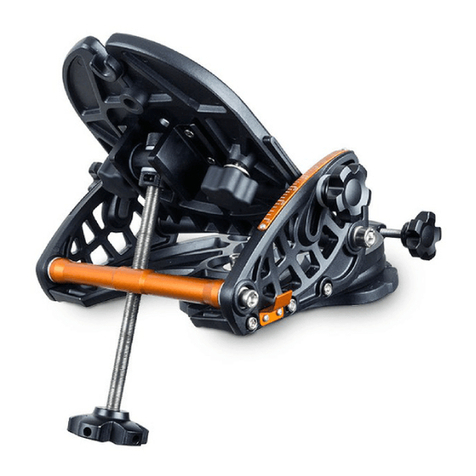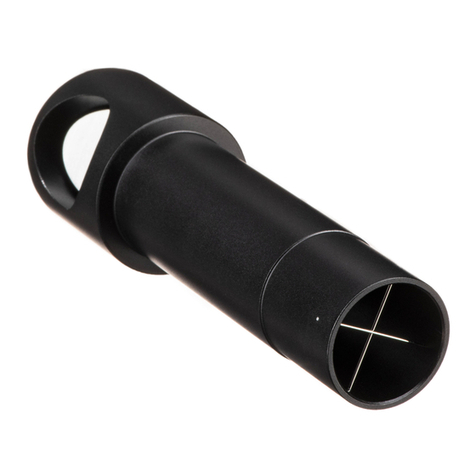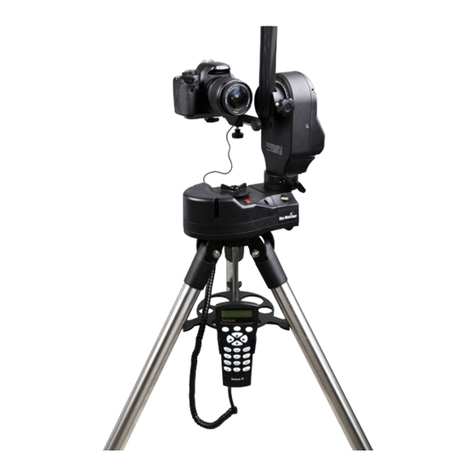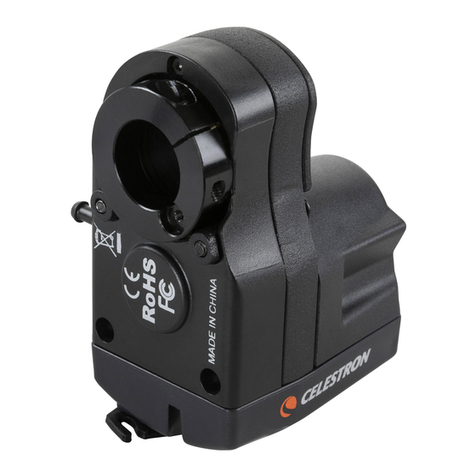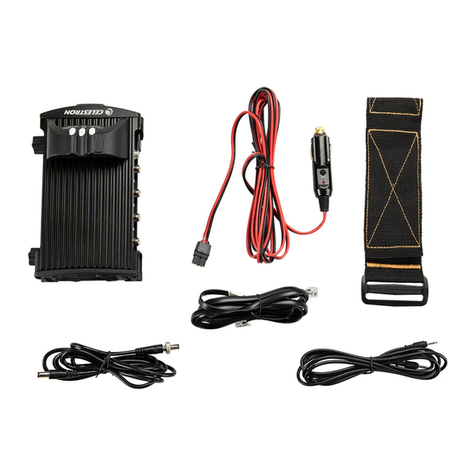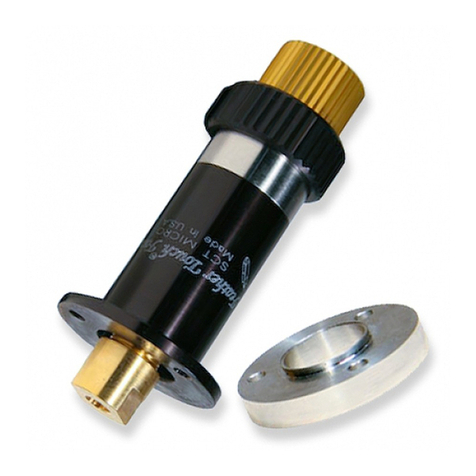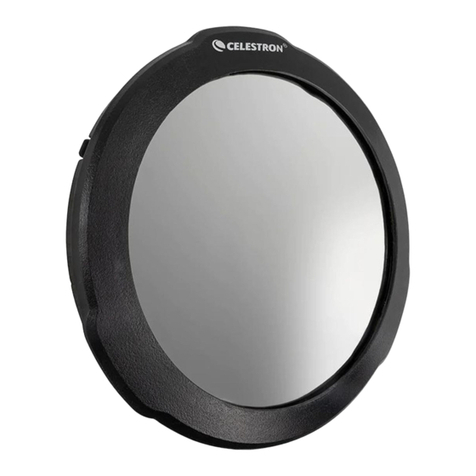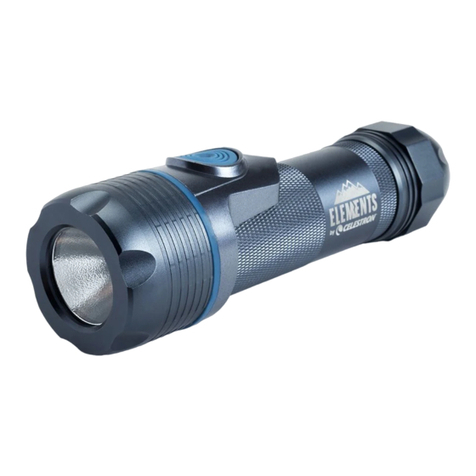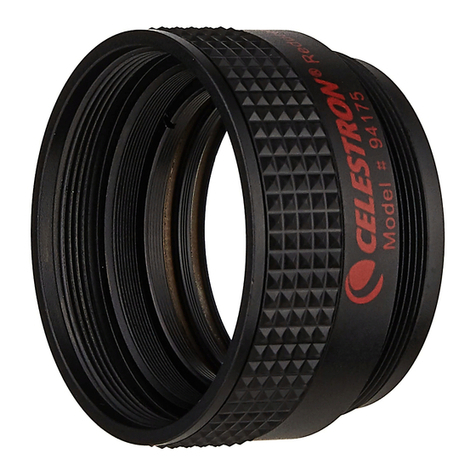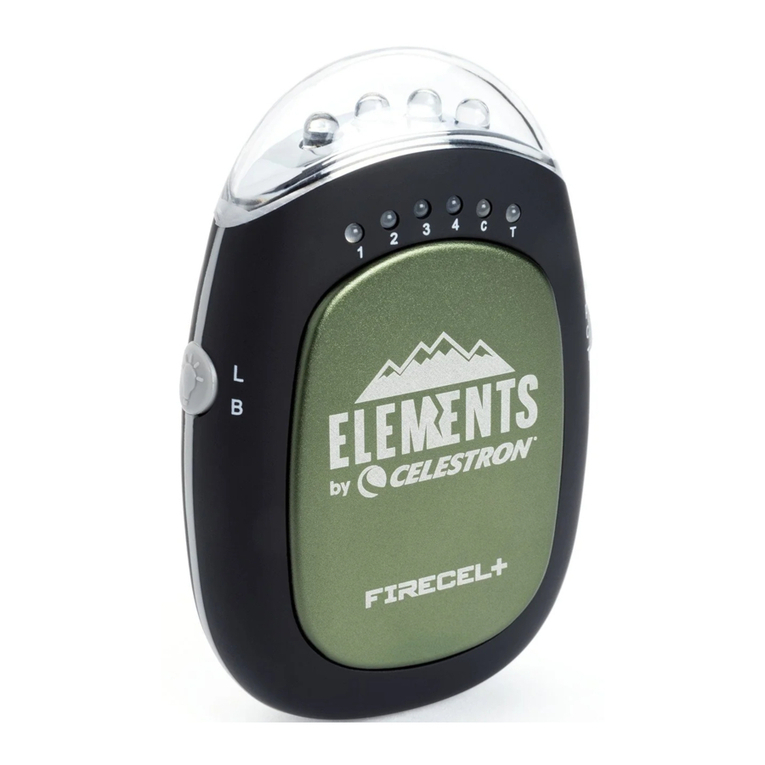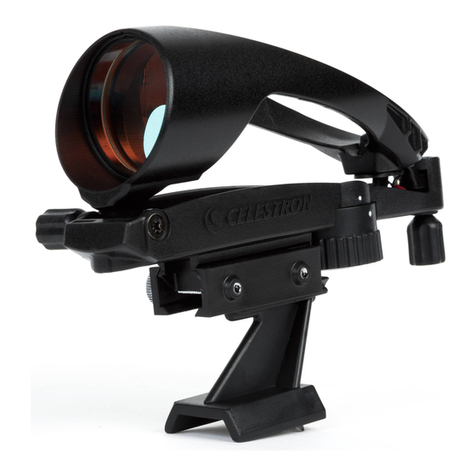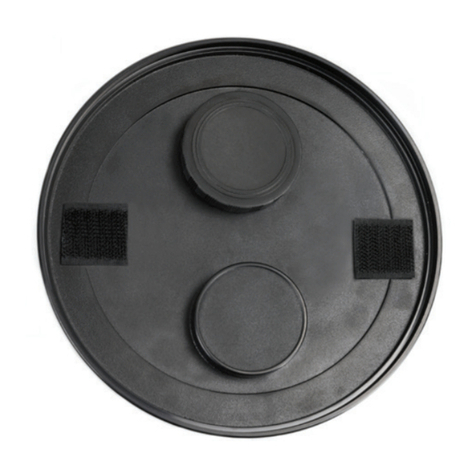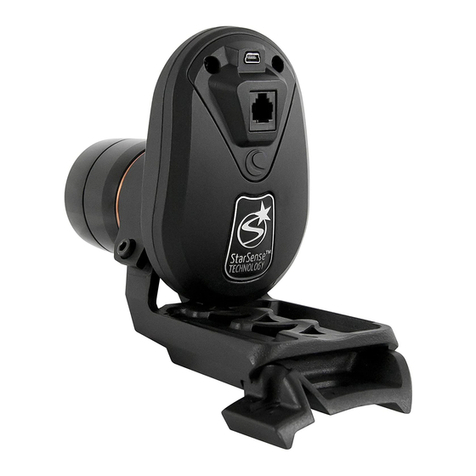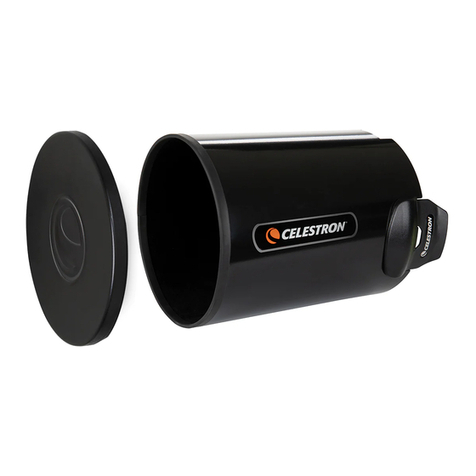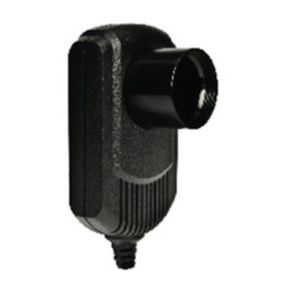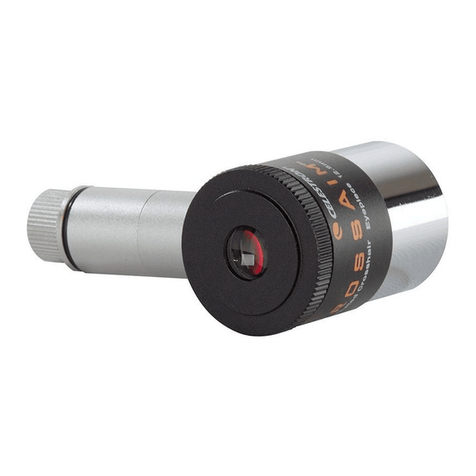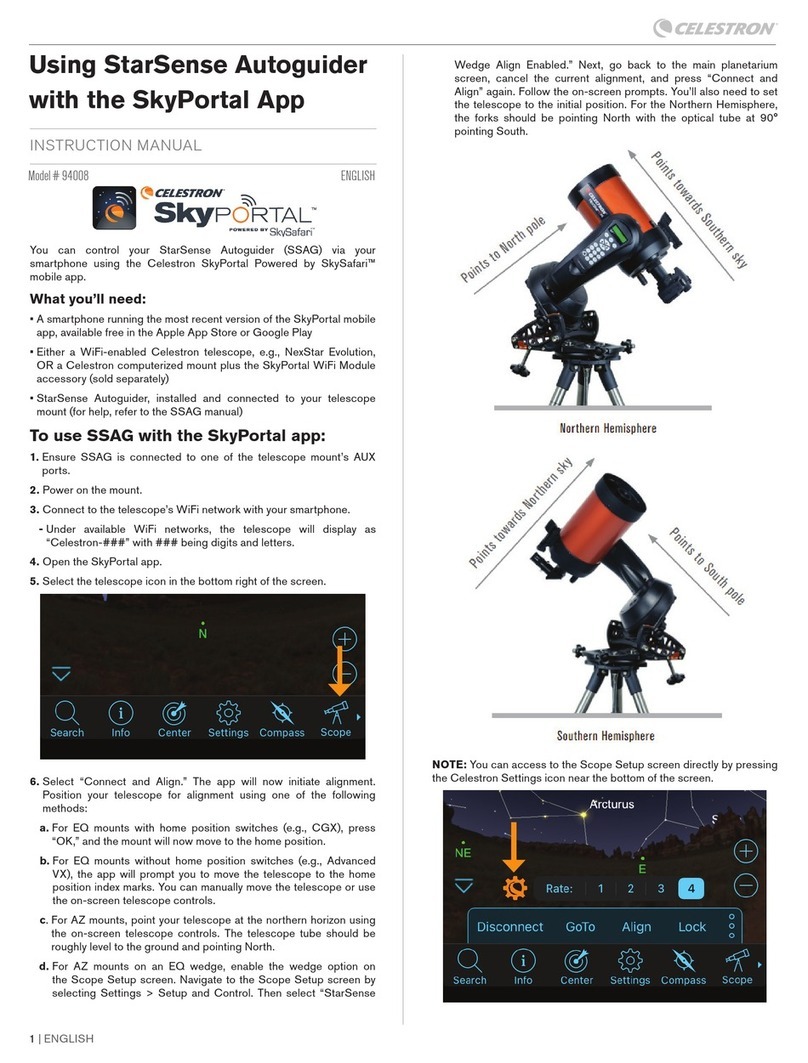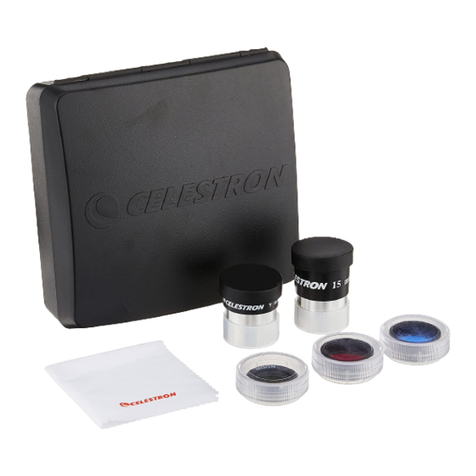
The StarPointer
Finderscope
Your telescope now includes an updated and easier
to use StarPointer finderscope.
To install the StarPointer Finderscope:
1.Loosen the two mounting screws near the bottom
of the finderscope.
2. Slide the base of the finderscope over the finderscope
mounting bracket found on the telescope optical tube.
3. Tighten the screws to secure the finderscope in place.
Your StarPointer finderscope is shipped with a clear
plastic tab inserted between the battery and the
contact to prevent the battery from accidentally
being discharged in shipment. Pull this tab out before
using your finderscope.
Using the StarPointer Finderscope:
The StarPointer finderscope helps you aim your
telescope by looking through its round glass window
and covering your target with the red dot projection.
The first time you assemble your telescope, you will
need to align the StarPointer with the main optics
of the telescope. Although this step can be done at
night, it is significantly easier during the day. Once
you have completed the finderscope alignment, you
should not have to repeat this step unless the finderscope
is bumped, dropped, or removed during transit.
To align the StarPointer:
1. Take the telescope outside during the day. Using
your naked eye, find an easily recognizable object,
such as a streetlight, car license plate, or tall tree.
The object should be as far away as possible, but
at least a quarter mile away.
2. Remove the main dust cover from the telescope and
make sure your lowest power (longest focal length)
eyepiece is installed in the focuser.
3. Move the telescope left and right or up and down so
that it is roughly pointing toward the object you chose
in step 1.
4. Look through the telescope using the eyepiece and
manually move the telescope until the object you
chose lies in the center of the view. If the image is
blurry, gently turn the focus knobs until it comes into
sharp focus.
Note: The image in the telescope eyepiece may appear
upside-down or mirror reversed, depending on the
type of telescope you have. This is perfectly normal
in an astronomical telescope.
5. Once the object is centered in your eyepiece, turn
on the finderscope by turning the power switch knob
clockwise as far as it will go.
6. With your head positioned about a foot behind the
finder, look through the round window and locate
the red dot. It will probably be close to, but not on
top of, the object you see when you are looking
through the eyepiece.
7. Without moving the telescope, use the two adjust-
ment knobs on the side and underneath the Star-
Pointer. One controls the left-right motion of the dot,
while the other controls the up-down motion. Adjust
both until the red dot appears over the same object
you are observing in the 20 mm eyepiece.
Now choose some other distant targets to practice
aiming your telescope. Look through the StarPointer
window and place the red dot on the target you are
trying to view and verify that it is in the eyepiece of
the scope.
Note: Be sure to turn off the StarPointer finderscope
when not in use to conserve battery power. New
batteries can be purchased online or at watch/
electronic stores.
FRANÇAIS
Le chercheur StarPointer
Votre télescope est maintenant livré avec un chercheur
StarPointer repensé qui est plus facile à utiliser.
Pour installer votre chercheur StarPointer :
1. Desserrez les deux vis de fixation situées au des
sous du chercheur.
2. Faites glisser la base du chercheur sur le support
de monture présent sur le tube optique du télescope.
3. Serrez les vis de fixation pour maintenir l’oculaire en place.
Votre chercheur StarPointer est livré avec une
languette de plastique insérée entre la pile et le
contact pour éviter que cette dernière ne se
décharge accidentellement pendant le transport.
Retirez cette languette avant d’utiliser le chercheur.
Utiliser le chercheur StarPointer :
Le chercheur StarPointer vous aide à pointer votre
télescope en regardant dans la fenêtre de verre
circulaire et en faisant coïncider le point rouge avec
la cible. La première fois que vous assemblez votre
télescope, vous devez aligner le chercheur avec le
système optique principal du télescope. Bien que
cette étape puisse être effectuée de nuit, il est
beaucoup plus facile de l’effectuer en journée. Une
fois l’alignement du chercheur effectué, vous ne
devriez pas avoir à répéter cette étape à moins que
le chercheur ait reçu un choc, ait subit une chute ou
ait été retiré pendant le transport.
Aligner le StarPointer :
1. Installez le télescope à l’extérieur pendant la
journée. À l’œil nu, choisissez un objet facilement
reconnaissable, comme un lampadaire, une plaque
d’immatriculation de voiture ou un grand arbre.
L’objet doit être le plus loin possible, de préférence
à au moins 400 m (un quart de mille).
2. Retirez le capuchon anti-poussière du télescope
et assurez vous que l’oculaire le moins puissant
(longueur de focale la plus longue) est installé
dans le tube de focale.
3. Orientez le télescope horizontalement et verticalement
afin qu’il pointe à approximativement vers l’objet que
vous avez choisi à l’étape 1.
4. Regardez à travers l’oculaire et déplacez-le
manuellement jusqu’à ce que l’objet que vous
avez choisi se trouve dans le centre du viseur.
Si l’image est floue, tournez tout doucement les
molettes de mise au point jusqu’à ce que l’image
soit nette.
Remarque : l’image que vous observez dans l’oculaire
peut apparaître renversée verticalement ou
verticalement, selon le type de télescope que
vous utilisez. C’est tout à fait normal dans une
lunette astronomique.
5. Une fois l’objet centré dans l’oculaire, allumez le
chercheur en faisant tourner la molette d’alimentation
dans le sens des aiguilles d’une montre au maximum.
6. Avec votre tête située à environ 30 cm (1 pied)
derrière le chercheur, regardez par la fenêtre ronde
du chercheur et localisez le point rouge. Il sera
probablement près de, mais pas exactement sur
l’objet que vous voyez lorsque vous regardez à
travers l’oculaire.
7. Sans bouger le télescope, utilisez les deux molettes
de réglage situées sur le côté et en dessous du
chercheur StarPointer. L’une contrôle le mouvement
gauche-droite du point, l’autre le mouvement haut-bas.
Ajustez les deux molettes jusqu’à ce que le point
rouge apparaisse sur l’objet que vous observez dans
l’oculaire de 20 mm.
Choisissez maintenant quelques autres cibles
lointaines pour vous exercer à pointer votre télescope.
Regardez par la fenêtre du chercheur et placez le point
rouge sur la cible que vous essayez de visualiser et
vérifiez qu’elle est visible dans l’oculaire du télescope.
Remarque : N’oubliez pas d’éteindre le chercheur
lorsqu’il n’est pas utilisé afin d’économiser les piles.
Power/Brightness Knob
Up/Down
Adjustment Knob
Mounting Screws Left/Right
Adjustment Knob
Molette alimentation/
luminosité
Molette de réglage
haut/bas
Vis de monture Molette de réglage
gauche/droite


